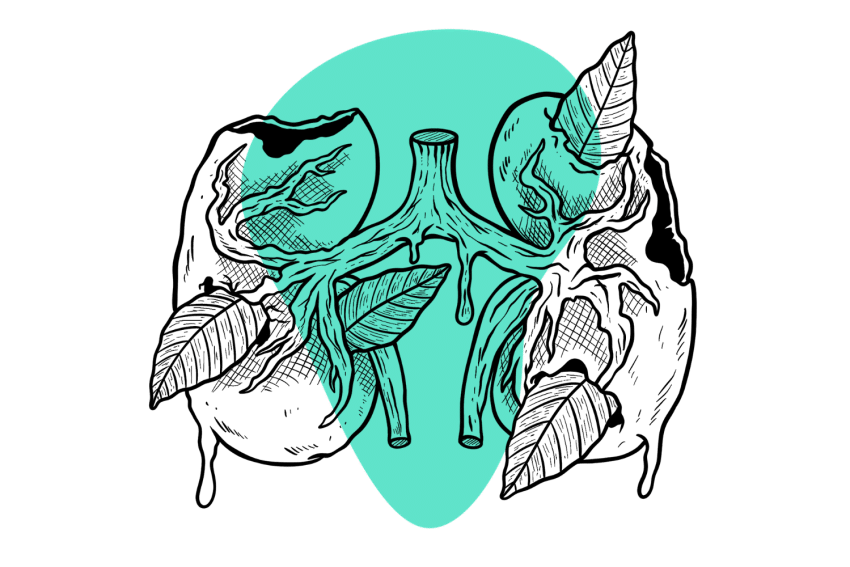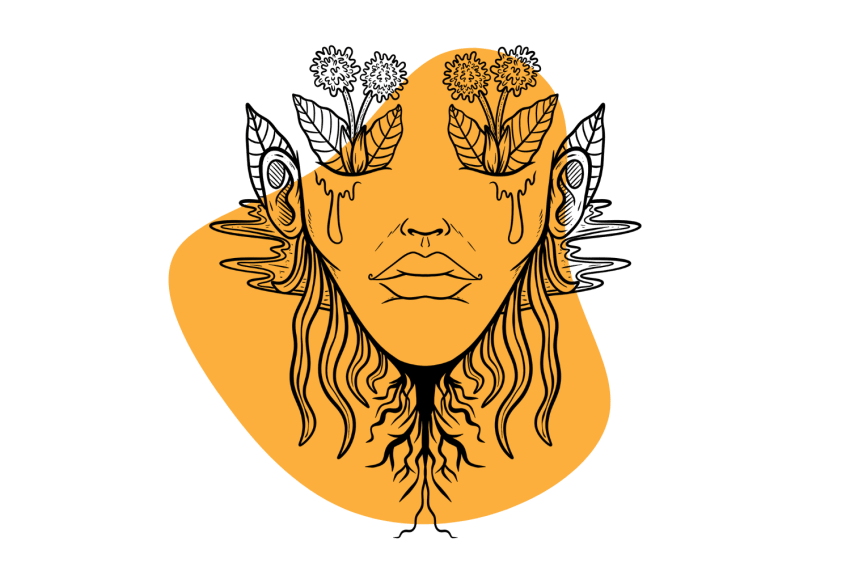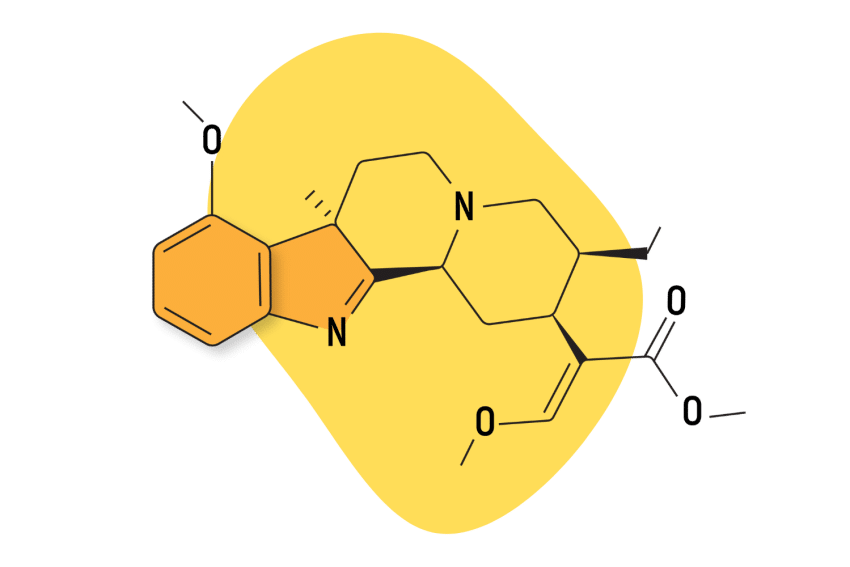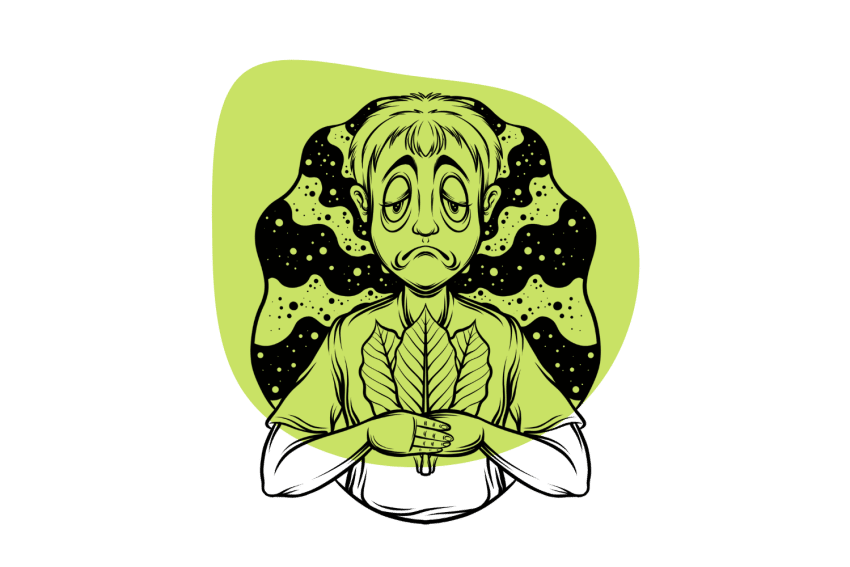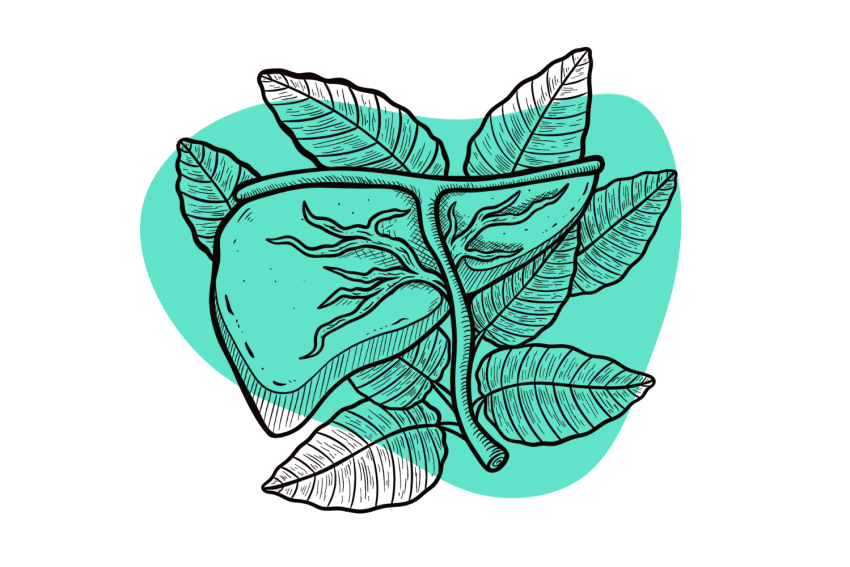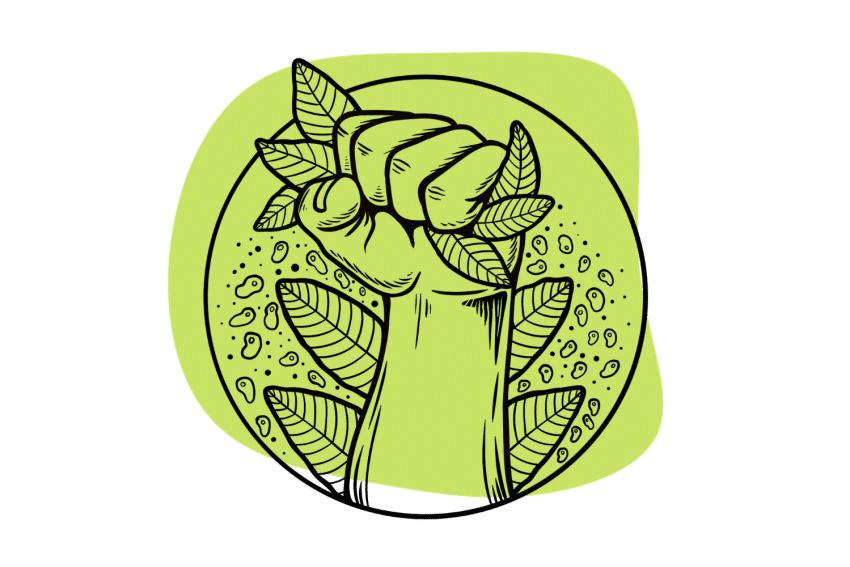Knock Out Pain With Kratom: Best Strains & How to Use Them
Kratom is potent enough that some people replace their pain meds with it, but it won’t be effective if you don’t know how to use it.
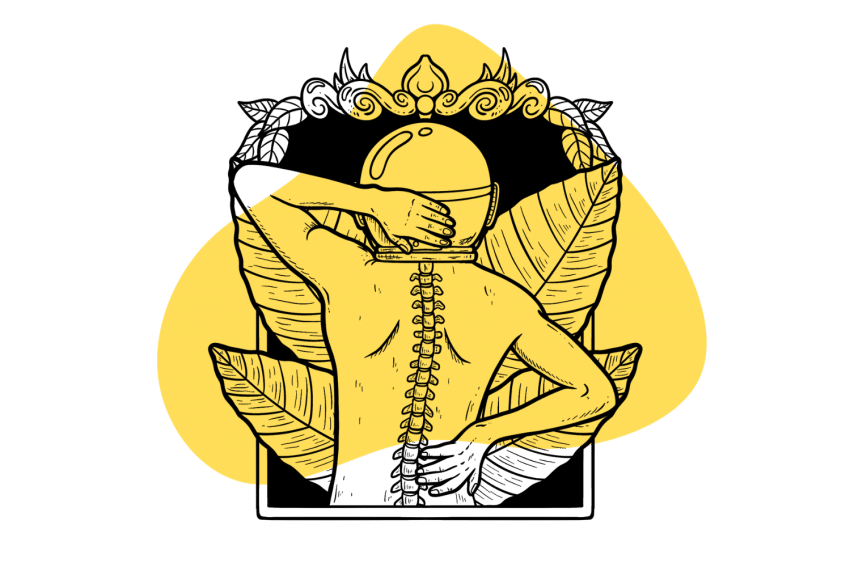
Kratom is an atypical opioid — which means it technically targets the opioid receptors, but it doesn’t look anything like other opioids on the market. It’s unique chemical structure allows it to provide some of the same powerful painkilling effects conventional opioids do, but with far less risk of overdose or addiction.
A big part of this comes from the fact that kratom alkaloids like mitragynine and 7-hydroxymitragynine don’t only target the opioid receptors — they interact with many different systems throughout the central nervous system. This means they’re way less likely to cause severe tolerance formation or overdose compared to morphine, oxycontin, or heroin.
Many people use kratom as an alternative to synthetic opiates for treating pain. But in order to get good results, you need to know what strain to use, how to find the correct dose, and the risks involved — and I cover it all in this guide.
Best Kratom to Use for Pain
As mentioned, kratom is an atypical opioid, which simply means it acts on other receptors (such as dopamine, adrenergic, and serotonin) and not just the opioid — which makes it safer than prescription opioids since it’s less specific [1]. This also makes it helpful for treating issues like anxiety and depression [2, 3].
Here are the top kratom strains used for pain, though don’t feel confined to these. Feel free to test others out since it affects everyone differently.
Red Vein Kratom Strains
Red strains are the number one pick for pain relief since they’re usually high in 7-hydroxymitragynine, kratom’s second-most abundant alkaloid. Mitragynine leads the pack, but while both are opioid receptor agonists, 7-hydroxymitragynine is the more potent. In fact, some research shows it’s more powerful than morphine.
Not to worry, it makes up a very small percentage of kratom and poses little threat [4]. (I’ll discuss the dangers — and in what circumstances they exist — below.)
One of the biggest drawbacks is that red strains also tend to be sedating. Until you have some experience, don’t use them when you need to be active or alert.

Here are five of our favorite red vein kratom strains for pain:
1. Red Bali
Red Bali is one of the most popular choices for pain, though it’s also great for mood and relaxation. Use this one at the end of the day when you’re ready to unwind.
This strain is easy to find and quite consistent.
2. Red Maeng Da
Maeng Da means “pimp grade” and typically refers to a vendor’s strongest strain. These have a high alkaloid content, so be careful when dosing.
Red Maeng Da is an excellent choice for daytime pain relief since it’s more stimulating than most reds.
3. Red Medan
Red Medan is harder to find than some other strains, but it’s worth getting if you come across it. It’s best at relaxing everything and perfect for tense muscles. This one can knock you out quickly, so start with a small amount.
4. Red Borneo
Red Borneo is another classic for pain relief, but it can be very relaxing, so be careful. Keep it on hand for tough nights when you need a strong painkiller.
5. Red Bentuangie
Red Bentuangie is fermented, giving it a more substantial alkaloid content. It’s easier to find than Medan, but make sure you buy it from a reputable vendor, as some might cut corners.
Green & Yellow Vein Kratom Strains
Green and yellow strains are tied for second because the answer really lies in when you need the pain relief and how much relief you need.
These strains are similar, but greens tend to be more energizing. Yellows are more calming — though not necessarily sedating, as some can still give a decent boost. Many people use yellow strains for anxiety since they have a unique way of slowing the mind without causing you to slow physically.

If you need physical and mental energy along with pain relief, try green strains — the following are particularly effective:
1. Green Bali
Green Bali’s long-lasting effects and ability to knock out tough pain make it a favorite among many users. It’s also popular for reducing anxiety but won’t leave you dragging.
2. Green Maeng Da
Green Maeng Da is like other Maeng Da strains and is very potent. It usually isn’t as effective against pain as the red version, but it’ll be well-rounded and offer more motivation to help you get going.
3. Green Hulu
This one is still energizing but tends to be more uplifting. It relieves mild to moderate pain and is great for days you feel down. It can help you get things done with a skip in your step — or at least with a little more ease.
4. Yellow Elephant
Yellow Elephant is similar to Green Hulu but with less oomph. It’s mellow and happy and will help you chill out when the going gets tough.
5. Yellow Indo
This strain is better for mild pain and is about as straightforward as possible. It isn’t dominant in any area and can meet your needs wherever you are. Think of it as a way to take the edge off, whether it’s a bad mood, discomfort, or drowsiness.
6. Yellow Thai
Yellow Thai is a master at easing anxiety and helping you feel more social or confident. It can help reduce pain and provide enough energy to keep you going without feeling overly stimulated.
Mixing Kratom Strains for Custom Effects
I don’t suggest jumping right into mixing strains; it helps to have a basic idea of which strains you like, how they affect you, and how much you use.
Test a variety of strains from multiple vendors to really get the most out of this. Some companies offer sample packs, allowing you to buy a smaller amount before investing lots of money in their product.
Once your preferences are dialed in, start mixing things up. This is probably the best way to meet your ever-fluctuating needs. Extra tired from dealing with pain all night? Mix a robust white with some red. Feeling stressed over an uncomfortable day? Try yellow, red, and green. Ready to unwind but can’t get comfortable? Use red and a little green. The options are limitless.
The only rule is to start with less than your normal dose, just in case it’s more potent than you think.
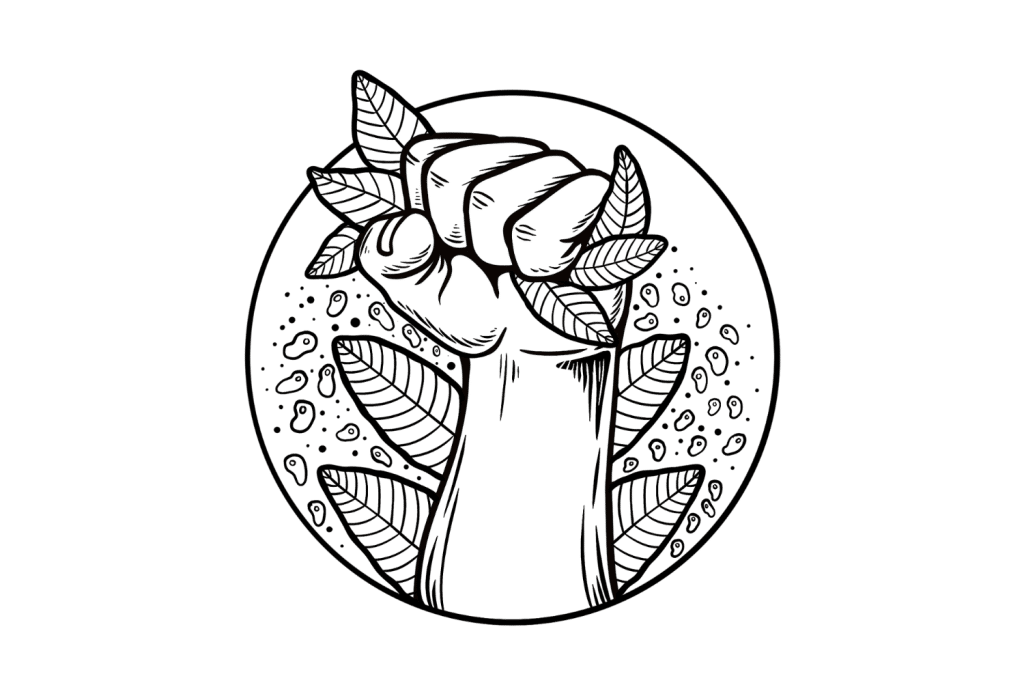
How Much Kratom to Use for Pain
While the strain is significant, it’s secondary to the dosage — kratom’s effects change drastically depending on how much you take.
All kratom has the same alkaloids, but the percentages vary, which is why the strain matters. However, larger amounts of kratom allow the 7-hydroxymitragynine to really shine through, essentially drowning out the energizing effects of mitragynine — regardless of the strain color.
While both alkaloids are opioid agonists, the latter does a better job of it and helps kratom pack a punch.
The other minor alkaloids play a big role, too, similar to how cannabis’ cannabinoids work together to produce better — and different effects — than when used alone.
It takes some time to dial in the dose that works for you. Play around with the amount and strain until you find what’s most effective.
To stay safe, follow these tips:
- Remember to accommodate for things like body weight and tolerance.
- Start at the low end and only take more once you’ve waited at least half an hour.
- Even if you’re dealing with severe pain, start with a low to medium dose. I’ll discuss the dangers of large doses below.
- Never mix kratom with prescription medications.
Follow this general dosage guide when first using kratom:
- Low Dose (Mild Pain): 2-5 grams
- Medium Dose (Moderate Pain): 5-8 grams
- Large Dose (Severe Pain): 8-12 grams
Related: Kratom Dosage Guide
Where to Buy the Best Kratom for Pain
If you’re tempted to run to the nearest gas station or headshop for kratom, don’t. Your best bet is to buy it online, even though it means waiting a few days. Kratom is still unregulated in many states, and buying it can be dangerous. Be diligent when finding a source — unless you want kratom with heavy metals, salmonella, drugs, or other adulterants [5].
If you’re in pain and desperate to try it ASAP, you can find good (and safe) enough kratom locally — you just need to know what to look for, but be prepared to pay more for it.
Why is it better to buy kratom online? First of all, it’s usually drastically cheaper, and who doesn’t like to save money? Second of all — actually, this is the most important point — it’s easier to vet the brand.
How can you tell if a company is legit? The best companies:
- Test their kratom through a third-party lab and make the results public
- Are open about their sources and manufacturing process
- Give details on who they are and why they’re passionate about what they do — it usually involves how kratom changed their life
Some gas station kratom brands do this, and a quick look at their website will tell you if they do or not, but you’re still paying more for a product that’s been sitting on a shelf for who-knows-how-long.
My personal favorites are Christopher’s Organic Botanicals, Oties Botanicals, and Your Leaf Your Life. We don’t get anything for recommending them; they’re just the companies I love and buy from regularly.
How Kratom Works for Pain
I already alluded to this, but kratom has complex pharmacology and acts on multiple systems [3], giving it incredible and unique traits that stretch beyond the following, but I’m limiting the list to ones that are pain-related.
1. Kratom Acts On Opioid Receptors
Many of kratom’s alkaloids interact with opioid receptors, but the results are very mixed. Some are partial mu-opioid receptor agonists. Some are full agonists. Others are kappa-opioid agonists. The list goes on [6]. The point is that scientists are still trying to figure out how kratom works on our bodies, and the answer is very complex.
Each alkaloid does something different, and sometimes they contradict each other. However, this also makes kratom safer since they help balance each other out.
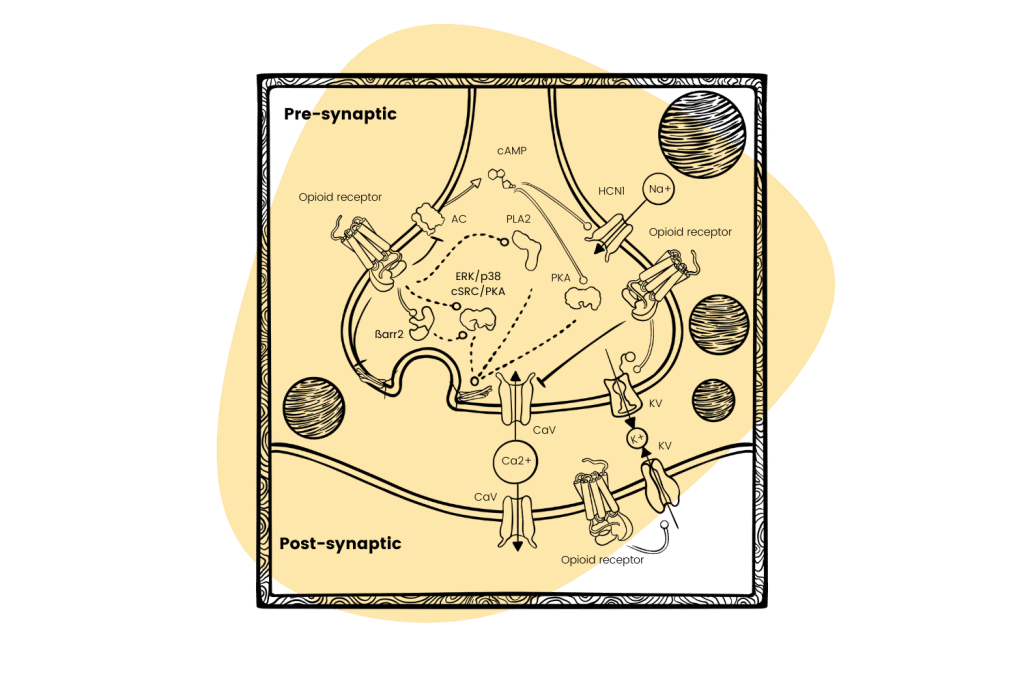
2. Kratom Reduces Inflammation
Kratom reduces pain through non-opioid receptor paths as well. Research shows mitragynine reduces TRPV1 and COX-2 expression, suggesting it has anti-inflammatory properties and lowers the amount of pain you feel. [7, 8, 9]
3. Kratom Increases Pain Tolerance
Some research shows kratom increases pain tolerance significantly within minutes and even an hour after consumption [7, 9, 10].
3. Kratom Relaxes Muscles
Studies show mitragynine relaxes skeletal muscles through a synergistic effect with pancuronium and succinylcholine and not as an acetylcholine antagonist [11].
People often use kratom to unwind after a long day or to relieve soreness after a good workout.
4. Kratom Improves Mood
What does mood have to do with pain? It’s obvious that pain — chronic or acute — can make you irritable, impatient, and even depressed and anxious. It turns out that the reverse is also true, in a sense. Your mood can drive your pain tolerance up and your perceived pain down, meaning you’ll feel less pain and handle it better.
Some of kratom’s alkaloids — paynantheine and speciogynine specifically — have a high affinity for 5-HT1AR and 5-HT2BR serotonin receptors [12]. The former is linked to anxiety and depression, while the latter helps regulate the central nervous system and is essential for life [13].
Mitragynine also has dopaminergic and GABA-ergic activity, adding to calming and anxiety-reducing traits [14], which can help you be more comfortable overall.

Is It Safe to Use Kratom for Pain?
Compared to prescription painkillers, kratom is much safer. However, it isn’t without risk.
Because it acts on opioid and dopamine receptors, it can be addictive — but this is also fairly easy to avoid. Most people don’t have a problem as long as they don’t use kratom daily and stick with reasonable amounts [15].
Kratom and opioid withdrawal share some similarities, but kratom is far less severe, and it’s harder to get addicted to in the first place. For more information, check out our article on kratom withdrawal.
Another big danger is drug interactions. Kratom is metabolized by the same enzymes that metabolize many other drugs — this can cause a medication to stay in your body longer than it should and even build up. Kratom also has a similar mechanism of action to other drugs, which can increase the effects. Talk to your doctor before using kratom if you’re on any medications or supplements. [16]
Fortunately, kratom’s side effects are short-lived and tend to be mild. The more you take, the more likely you’ll suffer from a few of them, but they fade as the kratom wears off. Nausea, dizziness, vomiting, and headaches are the most common. On the flip side, we don’t know much about kratom’s long-term side effects.
To summarize, you can reduce the risks of kratom use by following these rules:
- Take tolerance breaks; avoid using kratom a few days every week
- Limit the amount of kratom you use
- Never use kratom with other substances — always talk to your doctor first

FAQs: Kratom for Pain
Want to know more about kratom? Here are some questions people often ask.
1. Is kratom dangerous?
Kratom has been around for a long time, just not in the West. We have far more problems with it here than in areas where it grows naturally and people have used it for centuries, likely because we have extracts here. These are more potent and, therefore, more dangerous. Kratom is also used recreationally and combined with illicit drugs, which really adds to the risks.
When used responsibly, kratom is relatively low-risk for most people. If you have underlying health problems or are on medications, talk to your doctor before using kratom.
Related: Kratom Deaths — Debunking Common Myths & Misconceptions
2. Is kratom legal?
The answer isn’t easy since there are counties, towns, cities, and states that have outlawed or regulated it. Federally, kratom is unregulated in the US. Other countries have different laws. You’ll have to look it up and find out the local regulations for where you live.
3. What else can I use kratom for?
Kratom interacts with many systems, which means its effects are vast. It provides energy and focus in smaller amounts and sedation in larger amounts.
You can use it to fight insomnia, improve your mood, reduce anxiety and depression, and become more social. Some people say it helps their libido. Others swear it helped them lose weight.
Traditionally, it was even used for diarrhea, wounds, and parasites, among other things.
Check out our article on kratom uses for more details.
References
- Smith, K. E., Grundmann, O., Swogger, M. T., & Garcia-Romeu, A. (2023). Kratom (Mitragyna speciosa): Pharmacology and Use of a Naturally Occurring Atypical Opioid.
- Johnson, L. E., Balyan, L., Magdalany, A., Saeed, F., Salinas, R., Wallace, S., … & Grundmann, O. (2020). Focus: Plant-based Medicine and Pharmacology: The Potential for Kratom as an Antidepressant and Antipsychotic. The Yale journal of biology and medicine, 93(2), 283.
- Hanapi, N. A., Chear, N. J. Y., Azizi, J., & Yusof, S. R. (2021). Kratom alkaloids: Interactions with enzymes, receptors, and cellular barriers. Frontiers in Pharmacology, 12, 751656.
- Behnood-Rod, A., Chellian, R., Wilson, R., Hiranita, T., Sharma, A., Leon, F., … & Bruijnzeel, A. W. (2020). Evaluation of the rewarding effects of mitragynine and 7‐hydroxymitragynine in an intracranial self-stimulation procedure in male and female rats. Drug and alcohol dependence, 215, 108235.
- Weiss, S. T., & Brent, J. (2023). A cautionary tale of herbal supplements: What we have learned from kratom. Current Addiction Reports, 10(1), 1-8.
- Chakraborty, S., Uprety, R., Daibani, A. E., Rouzic, V. L., Hunkele, A., Appourchaux, K., … & Majumdar, S. (2021). Kratom alkaloids as probes for opioid receptor function: pharmacological characterization of minor indole and oxindole alkaloids from kratom. ACS chemical neuroscience, 12(14), 2661-2678.
- Shaik Mossadeq, W. M., Sulaiman, M. R., Tengku Mohamad, T. A., Chiong, H. S., Zakaria, Z. A., Jabit, M. L., … & Israf, D. A. (2009). Anti-inflammatory and antinociceptive effects of Mitragyna speciosa Korth methanolic extract. Medical Principles and Practice, 18(5), 378-384.
- Utar, Z., Majid, M. I. A., Adenan, M. I., Jamil, M. F. A., & Lan, T. M. (2011). Mitragynine inhibits the COX-2 mRNA expression and prostaglandin E2 production induced by lipopolysaccharide in RAW264. 7 macrophage cells. Journal of Ethnopharmacology, 136(1), 75-82.
- Mat, N. H., Bakar, S. N. S., Murugaiyah, V., Chawarski, M. C., & Hassan, Z. (2023). Analgesic effects of main indole alkaloid of kratom, mitragynine in acute pain animal model. Behavioural Brain Research, 439, 114251.
- Vicknasingam, B., Chooi, W. T., Rahim, A. A., Ramachandram, D., Singh, D., Ramanathan, S., … & Chawarski, M. C. (2020). Focus: Plant-based medicine and pharmacology: Kratom and pain tolerance: A randomized, placebo-controlled, double-blind study. The Yale journal of biology and medicine, 93(2), 229.
- Chittrakarn, S., Keawpradub, N., Sawangjaroen, K., Kansenalak, S., & Janchawee, B. (2010). The neuromuscular blockade produced by pure alkaloid, mitragynine and methanol extract of kratom leaves (Mitragyna speciosa Korth.). Journal of ethnopharmacology, 129(3), 344-349.
- León, F., Obeng, S., Mottinelli, M., Chen, Y., King, T. I., Berthold, E. C., … & McCurdy, C. R. (2021). Activity of Mitragyna speciosa (“kratom”) alkaloids at serotonin receptors. Journal of medicinal chemistry, 64(18), 13510-13523.
- Garcia-Garcia, A. L., Newman-Tancredi, A., & Leonardo, E. D. (2014). P5-HT 1A receptors in mood and anxiety: recent insights into autoreceptor versus heteroreceptor function. Psychopharmacology, 231, 623-636.
- Hazim, A. I., Ramanathan, S., Parthasarathy, S., Muzaimi, M., & Mansor, S. M. (2014). Anxiolytic-like effects of mitragynine in the open-field and elevated plus-maze tests in rats. The journal of physiological sciences, 64, 161-169.
- Henningfield, J. E., Chawarski, M. C., Garcia-Romeu, A., Grundmann, O., Harun, N., Hassan, Z., … & Huestis, M. A. (2023). Kratom withdrawal: Discussions and conclusions of a scientific expert forum. Drug and Alcohol Dependence Reports, 7.
- Tanna, R. S., Cech, N. B., Oberlies, N. H., Rettie, A. E., Thummel, K. E., & Paine, M. F. (2023). Translating kratom-drug interactions: from bedside to bench and back. Drug Metabolism and Disposition, 51(8), 923-935.

